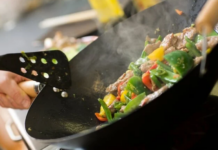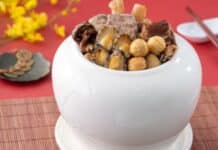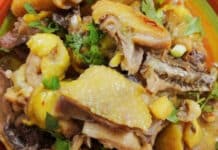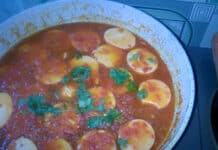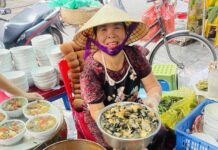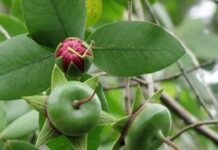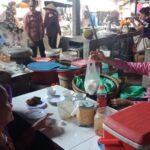Hot pot is a delicious dish, but when dining out, it’s important to be cautious in your food choices. Prepared foods that are marinated or seasoned heavily are more susceptible to being counterfeit, as spices can be used to mask the true quality.
Frozen hot pot balls
Beef balls, fish balls, and shrimp balls are not always made from real meat. They are mostly made from flour, flavorings, and a small amount of meat. These hot pot balls may be made from leftover scraps, low-quality meat, or even expired meat, with added preservatives to enhance the flavor. Furthermore, some of these balls might be produced in unhygienic environments, posing a health risk to consumers.
Jellyfish
Jellyfish may be soaked in formaldehyde to keep them looking fresh for longer. This chemical can be extremely harmful to one’s health. Opt for reputable, larger restaurants when consuming this delicacy. Authentic jellyfish should be transparent or slightly yellow, not overly bright white. It should also have natural elasticity, neither too chewy nor too soft. Fresh, high-quality jellyfish will not emit a chemical or pungent odor.
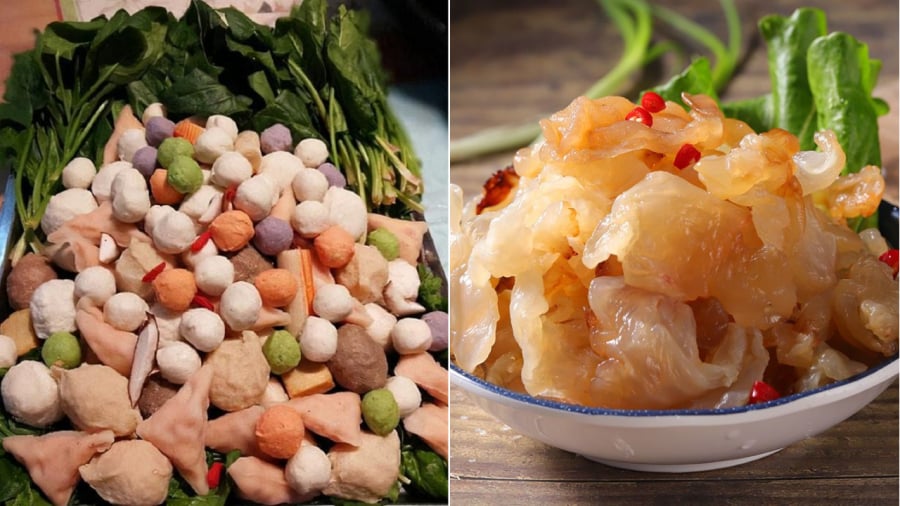
Hot pot balls and sliced jellyfish might be of inferior quality; it’s best to avoid ordering these when dining out for hot pot.
Duck blood
Each duck yields a small amount of blood, yet many hot pot restaurants offer it in large quantities. In reality, some places might mix duck blood with pig blood and a gelling agent to create a larger supply. This fake duck blood tends to be chewier and less fragile than genuine duck blood.
Squid
Squid is a beloved seafood choice, but it’s challenging to maintain its freshness. Some traders soak the squid in chemicals to preserve its appearance and make it look bright and white. If the squid has an abnormally shiny appearance or a chemical smell, it’s best to avoid consuming it.
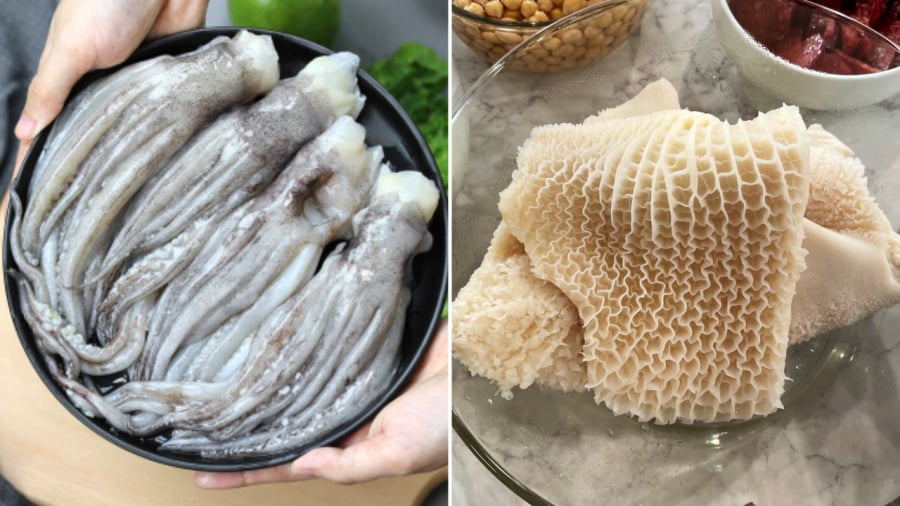
When dining out for hot pot, be cautious when ordering squid and beef tripe.
Beef tripe/honeycomb tripe
Beef tripe, also known as honeycomb tripe or beef blanket, is a popular choice for many. Initially, it has a black color and a strong odor. However, some establishments soak the tripe in hydrogen peroxide to whiten it, remove the smell, and extend its shelf life. This practice transforms the tripe into a hazardous food item, detrimental to one’s health.
The Secret to Eating Hot Pot Without Gaining Weight, Revealed by Carina Lau
With a few simple tips from Li Nhuan Dong, you can enjoy your favorite hot pot without worrying about ruining your figure. This timeless beauty shares her secrets to looking good and feeling great, so you can indulge in your favorite foods without the guilt. Discover how to balance your lifestyle and still enjoy the hot pot’s comforting warmth and delicious flavors. Embrace a guilt-free hot pot experience with Li Nhuan Dong’s effortless tips!
The Hidden Dangers of Four Seemingly Safe Foods: Low in Chemicals, but Prone to Parasitic Infection
Prioritizing fresh and chemical-free food for your family’s meals is commendable, but it’s important to be aware of the hidden dangers lurking in seemingly harmless foods. Unbeknownst to many, certain foods, if not prepared properly, can pose a serious risk of parasitic infections, particularly from worms. It is crucial to be vigilant and informed to safeguard your family’s health.
The Ancient Heart of Phu Tho: Unveiling a 300-Year-Old Marketplace, a Vibrant Legacy and Pride of the “Land of Ancestors”
The Xom Market has a long history, nestled on the banks of the Lo River. It served as a bustling hub for trade and exchange between the lowland and upland regions, and the East and West lands. Since the Ly Dynasty, Xom Market has thrived as a vibrant commercial center, comparable to other prominent markets along the Thanh Giang River (now known as the Lo River), such as Trang Sao, Ben Doc, Tam Son (Ben Then), and Ben Gom.







